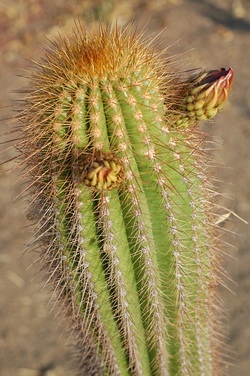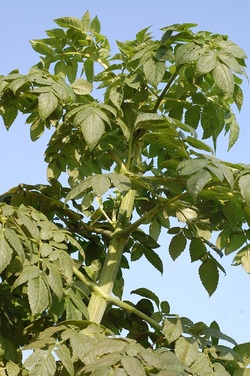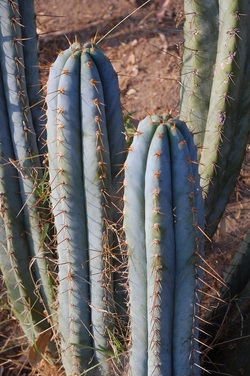FAQ
Q: Why is drought-tolerant gardening becoming popular?
A: Water is precious. It is also expensive. Much of the west has vast areas with little annual rain. Importing non-native plants into arid regions brings many problems, one of which is that it takes more water to successfully grow exotic species. Using drought-tolerant and native species allows us to appreciate beautiful plants that use less water and provide food and shelter for native birds and animals.
Q: Won’t most plants be fine with a sprinkler system installed?
A: No. Sprinklers lose a majority of water to evaporation. Also, the water barely penetrates the surface and the plants’ roots won’t grow deeply enough to flourish. With a shallow root system, the plants will continue to need even more water that continues to evaporate quickly. It’s a vicious, expensive cycle of waste.
Q: How should we irrigate the property then?
A: Sprinklers must be used on lawns. However, all other plants, shrubs and trees can use drip irrigation. Developed in Israel, drip irrigation puts water right at the plants’ roots. The slow drip prevents evaporation. This allows water to seep deeply into the ground where it escapes evaporation, stored safely until the plant needs it.
Q: Does drought-tolerant gardening really save me money?
A: Yes! Your water bills will be lower, particularly now that most of us are on water meters. Furthermore, with less overall water application, weeds are less likely to grow and herbicides become unnecessary. You will also see a reduction in your electricity bills when shade-producing trees are placed near houses that would otherwise be heated by the sun. Furthermore, most cacti, succulents and native plants are perennial plants, meaning that you will rarely need to replace dead plants. And ultimately, all of this will improve the value of your property.
Q: Does drought-tolerant gardening mean I can’t have lots of flowers?
A: No! There are many, many species of beautiful drought-tolerant flowering plants and shrubs. And, when you implement a drip-irrigation system, your plants will hold their blooms for longer. Sprinklers tend to degrade flowers by saturating the petals with water. Also, by digging large holes and filling them with organic matter, you allow plants to hold their blooms through the hottest summers. This makes it possible to use even less water.
Q: Should I keep my lawn as big as it is or are there other options?
A: We know how nice it is to have a large lawn. However, we’ve found that one can reduce their lawn by fifty percent without obstructing pathways and high traffic areas. Where the grass is removed, groundcover or native plants may be used.
Q: If I want to grown orchids or other tropicals what can I do?
A: Get a small greenhouse. We offer a few small models which can hold plenty of orchids and humidity-loving plants. Also, overwintering plants in greenhouses prevents damage from surprise frosts and starting seeds in the spring lets you be the first on your block with fresh vegetables!
Q: Can I do all of this myself?
A: Yes! It’s your property; discover the joys of gardening yourself. We offer designs that you can follow, plant lists that you can take to any garden store, and if you email us, we will, in the order received, answer each and every request.
A: Water is precious. It is also expensive. Much of the west has vast areas with little annual rain. Importing non-native plants into arid regions brings many problems, one of which is that it takes more water to successfully grow exotic species. Using drought-tolerant and native species allows us to appreciate beautiful plants that use less water and provide food and shelter for native birds and animals.
Q: Won’t most plants be fine with a sprinkler system installed?
A: No. Sprinklers lose a majority of water to evaporation. Also, the water barely penetrates the surface and the plants’ roots won’t grow deeply enough to flourish. With a shallow root system, the plants will continue to need even more water that continues to evaporate quickly. It’s a vicious, expensive cycle of waste.
Q: How should we irrigate the property then?
A: Sprinklers must be used on lawns. However, all other plants, shrubs and trees can use drip irrigation. Developed in Israel, drip irrigation puts water right at the plants’ roots. The slow drip prevents evaporation. This allows water to seep deeply into the ground where it escapes evaporation, stored safely until the plant needs it.
Q: Does drought-tolerant gardening really save me money?
A: Yes! Your water bills will be lower, particularly now that most of us are on water meters. Furthermore, with less overall water application, weeds are less likely to grow and herbicides become unnecessary. You will also see a reduction in your electricity bills when shade-producing trees are placed near houses that would otherwise be heated by the sun. Furthermore, most cacti, succulents and native plants are perennial plants, meaning that you will rarely need to replace dead plants. And ultimately, all of this will improve the value of your property.
Q: Does drought-tolerant gardening mean I can’t have lots of flowers?
A: No! There are many, many species of beautiful drought-tolerant flowering plants and shrubs. And, when you implement a drip-irrigation system, your plants will hold their blooms for longer. Sprinklers tend to degrade flowers by saturating the petals with water. Also, by digging large holes and filling them with organic matter, you allow plants to hold their blooms through the hottest summers. This makes it possible to use even less water.
Q: Should I keep my lawn as big as it is or are there other options?
A: We know how nice it is to have a large lawn. However, we’ve found that one can reduce their lawn by fifty percent without obstructing pathways and high traffic areas. Where the grass is removed, groundcover or native plants may be used.
Q: If I want to grown orchids or other tropicals what can I do?
A: Get a small greenhouse. We offer a few small models which can hold plenty of orchids and humidity-loving plants. Also, overwintering plants in greenhouses prevents damage from surprise frosts and starting seeds in the spring lets you be the first on your block with fresh vegetables!
Q: Can I do all of this myself?
A: Yes! It’s your property; discover the joys of gardening yourself. We offer designs that you can follow, plant lists that you can take to any garden store, and if you email us, we will, in the order received, answer each and every request.



